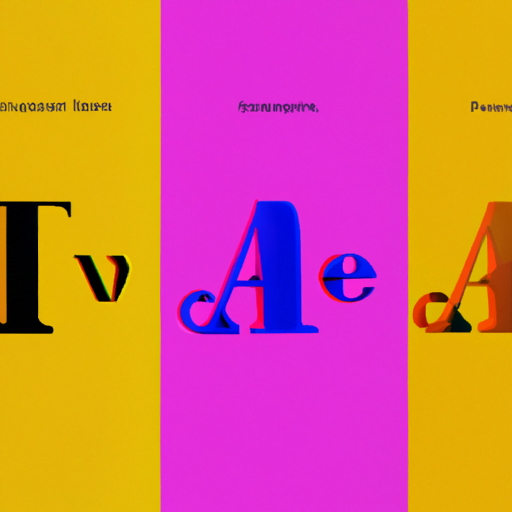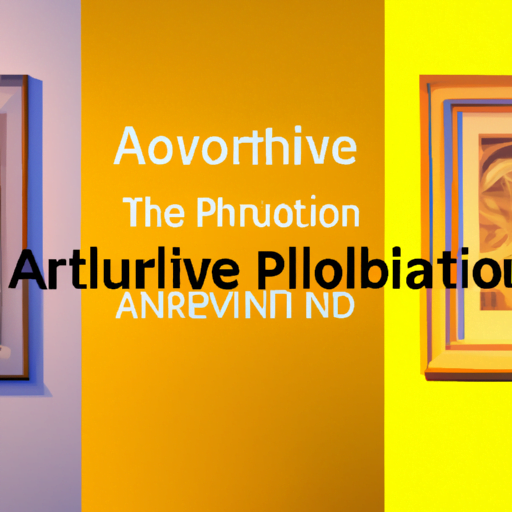
-
Table of Contents
Transforming Typography: AI and the Evolution of Fonts

Typography, the art and technique of arranging type, has been an integral part of human communication for centuries. From ancient inscriptions to modern digital interfaces, fonts have played a crucial role in conveying information and evoking emotions. However, with the advent of artificial intelligence (AI), typography is undergoing a transformative evolution. AI is revolutionizing the way fonts are created, customized, and utilized, opening up new possibilities for designers and users alike.
The Rise of AI in Typography
Artificial intelligence has made significant advancements in various fields, including image recognition, natural language processing, and machine learning. These advancements have paved the way for AI to enter the realm of typography. By leveraging AI algorithms, designers and developers can now create and manipulate fonts in ways that were previously unimaginable.
One of the key areas where AI is making a significant impact is in font generation. Traditionally, creating a new font required hours of meticulous work by skilled typographers. However, AI-powered tools can now generate fonts automatically, saving time and effort. These tools analyze vast amounts of existing fonts, identify patterns, and generate new font variations based on the desired style or aesthetic.
For example, Google’s DeepMind has developed an AI system called “Sketch-RNN” that can generate hand-drawn fonts based on simple sketches. By training the AI on a dataset of handwritten characters, it can generate new fonts that mimic the style and stroke variations of human handwriting. This technology opens up possibilities for creating personalized fonts that reflect an individual’s unique handwriting style.
Customization and Personalization
AI is not only transforming the process of font creation but also enabling greater customization and personalization. With AI-powered tools, users can now easily modify existing fonts to suit their specific needs and preferences.
For instance, Adobe’s “Project Faces” uses AI to analyze a user’s handwriting and convert it into a personalized font. By scanning a few pages of handwritten text, the AI system can identify the unique characteristics of the user’s handwriting and generate a custom font that closely matches their style. This personalized font can then be used in various applications, such as digital documents, invitations, or branding materials.
Furthermore, AI can also assist in font pairing, which is the process of selecting complementary fonts for different design elements. Designers often spend a significant amount of time experimenting with different font combinations to achieve the desired visual harmony. AI-powered tools can analyze vast font libraries, identify suitable pairings based on established design principles, and suggest font combinations that work well together.
Enhancing Accessibility and Readability
AI is not only transforming the aesthetics of typography but also improving its accessibility and readability. Typography plays a crucial role in ensuring that information is effectively communicated and easily understood by all users, including those with visual impairments.
AI-powered tools can analyze text and automatically adjust font attributes, such as size, spacing, and contrast, to enhance readability. For example, Microsoft’s “ClearType” technology uses AI algorithms to optimize the rendering of text on digital displays, improving legibility and reducing eye strain. Similarly, AI can analyze text content and suggest appropriate font styles and sizes to ensure optimal readability for different contexts, such as mobile devices or large displays.
Moreover, AI can assist in creating inclusive typography by generating fonts that are specifically designed for individuals with visual impairments. For instance, “OpenDyslexic” is a font developed using AI algorithms that incorporates subtle visual modifications to make reading easier for individuals with dyslexia. By analyzing the reading patterns and preferences of individuals with dyslexia, AI can generate fonts that reduce letter confusion and improve reading speed and comprehension.
The Future of AI and Typography
The integration of AI into typography is still in its early stages, but the potential for innovation and transformation is immense. As AI algorithms continue to improve, we can expect even more advanced tools and techniques to emerge, revolutionizing the way fonts are created, customized, and utilized.
Some potential future developments in AI and typography include:
- Real-time font generation: AI-powered tools that can generate fonts on the fly, allowing designers to experiment and iterate quickly.
- Emotion-based typography: AI algorithms that can analyze text content and generate fonts that evoke specific emotions or moods, enhancing the impact of visual communication.
- Dynamic typography: AI-powered fonts that can adapt and change based on contextual factors, such as user preferences, device capabilities, or environmental conditions.
- Collaborative font creation: AI systems that enable multiple designers to collaborate on font creation, leveraging the collective creativity and expertise of a diverse group.
These advancements in AI and typography have the potential to revolutionize various industries, including graphic design, advertising, user interface design, and branding. By harnessing the power of AI, designers can push the boundaries of creativity and create truly unique and impactful typographic experiences.
Conclusion
The integration of AI into typography is transforming the way fonts are created, customized, and utilized. AI-powered tools are automating font generation, enabling greater customization and personalization, enhancing accessibility and readability, and opening up new possibilities for innovation. As AI algorithms continue to advance, we can expect even more exciting developments in the field of typography. The future of typography is undoubtedly intertwined with AI, and designers and users alike stand to benefit from this transformative evolution.
